Scientific name Chaenomeles Rank Genus | Higher classification Malinae | |
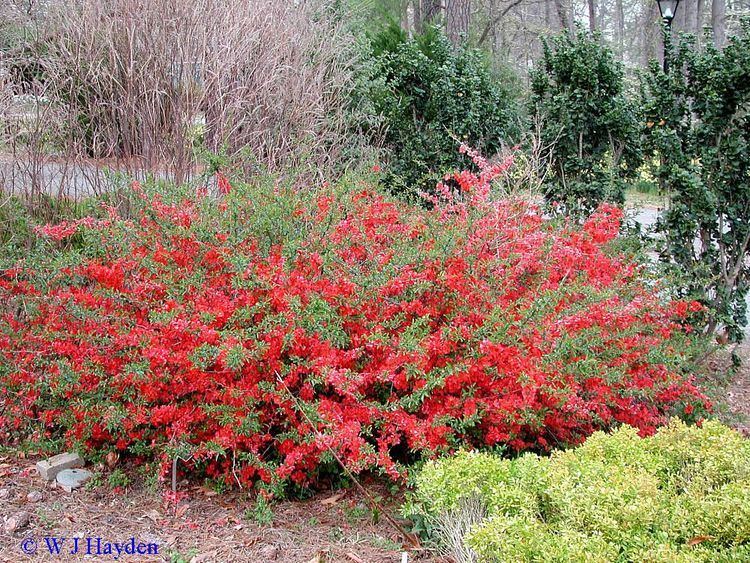 | ||
Lower classifications Chaenomeles japonica, Chaenomeles speciosa, Pseudocydonia, Chaenomeles cathayensis | ||
Double take flowering quince 30 sec plant of the day chaenomeles speciosa
Chaenomeles is a genus of three species of deciduous spiny shrubs, usually 1–3 m tall, in the family Rosaceae. They are native to Japan, Korea, China, Bhutan, and Burma. (Burmese: ချဉ်စော်ကား) These plants are related to the quince (Cydonia oblonga) and the Chinese quince (Pseudocydonia sinensis), differing in the serrated leaves that lack fuzz, and in the flowers, borne in clusters, having deciduous sepals and styles that are connate at the base.
Contents
- Double take flowering quince 30 sec plant of the day chaenomeles speciosa
- Chaenomeles garden plants
- Common names
- Species and hybrids
- Uses
- References
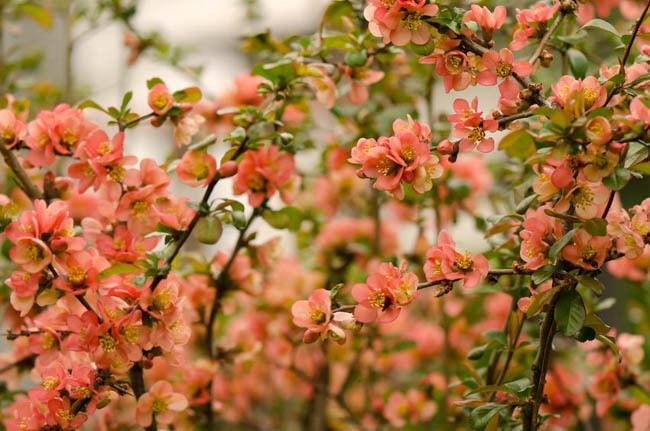
The leaves are alternately arranged, simple, and have a serrated margin. The flowers are 3–4.5 cm diameter, with five petals, and are usually bright orange-red, but can be white or pink; flowering is in late winter or early spring. The fruit is a pome with five carpels; it ripens in late autumn.
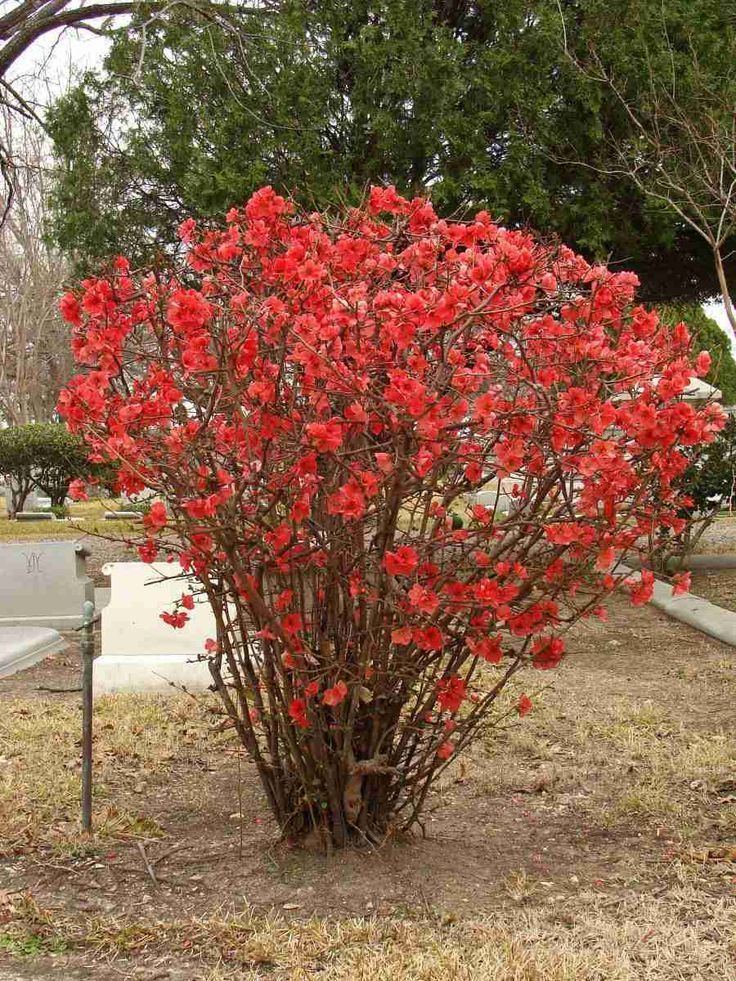
Chaenomeles is used as a food plant by the larvae of some Lepidoptera species including Brown-tail and the leaf-miner Bucculatrix pomifoliella.
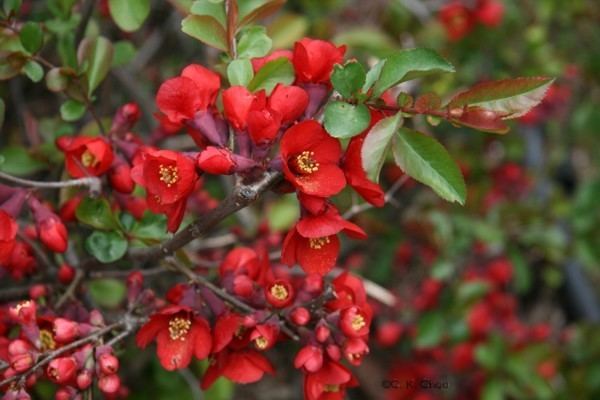
Chaenomeles garden plants
Common names

Although all quince species have flowers, gardeners in the West often refer to these species as "flowering quince", since Chaenomeles are grown ornamentally for their flowers, not for their fruits. These plants have also been called "Japanese quince", and the name "japonica" (referring to C. japonica) was widely used for these plants in the 19th and 20th centuries, although this common name is not particularly distinctive, since japonica is a specific epithet shared by many other plants. The names "japonica" or "Japanese quince" were (and still are) often loosely applied to Chaenomeles in general, regardless of their species. The most commonly cultivated Chaenomeles referred to as "japonica" are actually the hybrid C. × superba and C. speciosa; C. japonica itself is not as commonly grown.
Species and hybrids
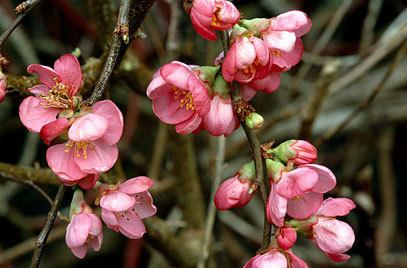
C. cathayensis is native to western China and has the largest fruit of the genus, pear-shaped, 10–15 cm long and 6–9 cm wide. The flowers are usually white or pink. The leaves are 7–14 cm long.
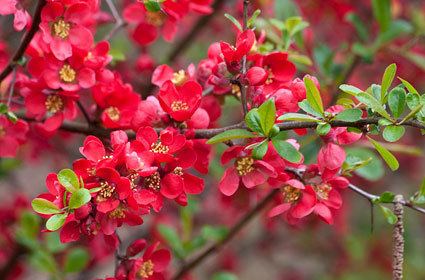
C. japonica (Maule's Quince or Japanese Quince) is native to Japan, and has small fruit, apple-shaped, 3–4 cm diameter. The flowers are usually red, but can be white or pink. The leaves are 3–5 cm long.
C. speciosa (Chinese Flowering Quince; syn.: Chaenomeles laganaria, Cydonia lagenaria, Cydonia speciosa, Pyrus japonica) is native to China and Korea, and has hard green apple-shaped fruit 5–6 cm diameter. The flowers are shades of red, white, or flecked with red and white. The leaves are 4–7 cm long.
Four named hybrids have been bred in gardens. The most common is C. × superba (hybrid C. speciosa × C. japonica), while C. × vilmoriniana is a hybrid C. speciosa × C. cathayensis, and C. × clarkiana is a hybrid C. japonica × C. cathayensis. The hybrid C. × californica is a tri-species hybrid (C. × superba × C. cathayensis). Numerous named cultivars of all of these hybrids are available in the horticultural trade.
Uses
The species have become popular ornamental shrubs in parts of Europe and North America, grown in gardens both for their bright flowers and as a spiny barrier. Some cultivars grow up to 2 m tall, but others are much smaller and creeping.
They are also suitable for cultivation as a bonsai.
The fruits are very hard and astringent and very unpleasant to eat raw, though they do soften and become less astringent after frost (when they are said to be "bletted"). They are, however, suitable for making liqueurs, as well as marmalade and preserves, as they contain more pectin than apples and true quinces. The fruits are sometimes used as a substitute for true quinces, though the fruit of flowering quinces is considered by some to be inferior in flavor compared to the fruit of true quinces. The fruit of flowering quinces also contains more vitamin C than lemons (up to 150 mg/100 g).
